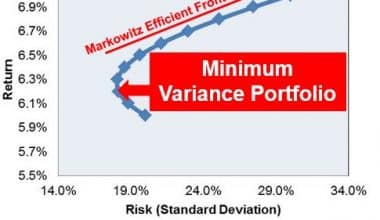Bookkeeping is a vital aspect of running a small business. It involves the systematic and organized recording, classification, and summarization of financial transactions. Proper bookkeeping not only helps you track the financial health of your business, but it also ensures compliance with tax laws and helps you make informed decisions about the future of your company.
Small-business owners may find bookkeeping to be a demanding process because it requires attention to detail, organization, and a solid understanding of financial concepts. However, with a little bit of knowledge and the right tools, bookkeeping can be manageable.
So, whether you’re a small business owner looking to get a handle on your bookkeeping or you’re just curious about the ins and outs of this important business function, this article will get you started on understanding the basics of bookkeeping.

Bookkeeping Systems
Bookkeeping systems are classified into two types: single and double-entry. Single-entry bookkeeping is a simpler system where each financial transaction is recorded in only one account.
On the other hand, double-entry bookkeeping is a more comprehensive system where each transaction is recorded in two accounts—debit and credit. Double-entry bookkeeping provides a more accurate representation of a company’s financial position and is generally recommended for small businesses.
Regardless of the bookkeeping system you choose, the core task is recording financial transactions. This includes everything from sales to payments and receipts. It’s important to be thorough and keep detailed records of all transactions to ensure that your books are accurate and up-to-date.
Bookkeeping Tools and Software
Traditionally, bookkeeping has been done using ledger books or Excel spreadsheets. While these methods can still be effective, there are now various professional bookkeeping apps and online platforms that make the task easier and more efficient.
These systems provide functions like automated bank transaction import, invoicing and billing, spending monitoring, and profit and loss summaries. Additionally, they often provide interfaces with other business tools, like project management software and payment processors.
Using bookkeeping software has several advantages. They are often easier to use than manual methods, can save time and reduce the risk of errors, and provide secure, cloud-based storage for financial records. However, it’s important to keep in mind that these tools can also have drawbacks, such as subscription fees and a learning curve.
Bookkeeping Tasks
Bookkeeping involves a variety of tasks, including invoicing, payroll, taxes, expense tracking, and preparing profit and loss statements.
Invoicing involves sending out bills to customers for goods or services rendered and keeping track of payments received. Proper processing is important for maintaining cash flow and ensuring that you are paid on time.
Payroll is the process of compensating workers for their labor. This includes calculating and distributing wages, as well as paying and reporting taxes. Accurate payroll is essential for compliance with labor laws and for keeping employees happy.
Taxes are a necessary part of doing business, and proper bookkeeping is crucial for tax compliance. This includes keeping track of deductible expenses, calculating and paying taxes owed, and preparing tax returns.
Expense tracking involves keeping track of all business expenses, including things like rent, utilities, and supplies. Accuracy is important for budgeting and for taking advantage of tax deductions.
Profit and loss statements, also known as income statements, are a key tool for understanding the financial performance of your business. They provide a summary of revenues and expenses over a specific period, allowing you to see how much profit (or loss) your business has made.
Best Practices for Bookkeeping
Effective bookkeeping requires organization and diligence. Here are a few best practices to help you stay on top of your bookkeeping tasks:
- Stay up-to-date. Record financial transactions and update your books regularly to keep them accurate and current.
- Keep good records. Store all relevant documents, such as invoices and receipts, in a safe and easily accessible place.
- Double-check for accuracy. Mistakes in bookkeeping can have serious consequences, so it’s important to double-check your work for accuracy.
- Use bookkeeping software. As mentioned above, using a bookkeeping tool or an online platform helps streamline and simplify the process.
- Seek professional help. If you’re not confident in your bookkeeping skills or don’t have the time to handle it yourself, consider hiring an expert bookkeeper or accountant.

Final Thoughts
Bookkeeping is vital for managing a small business. There are various tools and software available to help make the bookkeeping process simpler, but it’s important to stay organized, double-check for accuracy, and get the help of a professional if needed. By prioritizing bookkeeping, you can ensure the financial health and success of your business.






